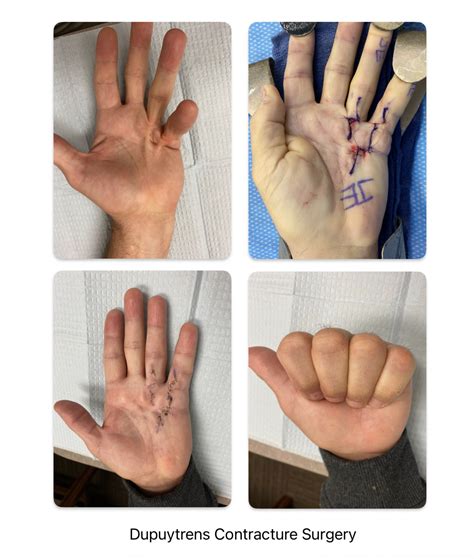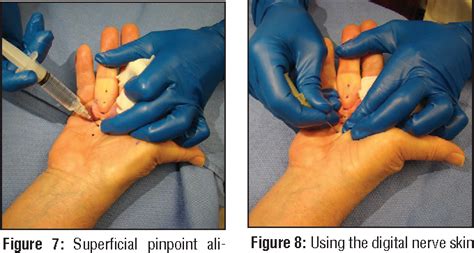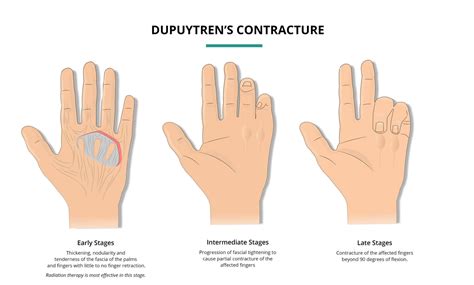Intro
Explore Dupuytrens contracture surgery options, including minimally invasive treatments and traditional surgical methods, to relieve finger contractures and improve hand function, discussing recovery and potential complications.
The condition known as Dupuytren's contracture is a chronic and progressive disorder that affects the palmar fascia, leading to the formation of nodules and thickened cords that can cause the fingers to curl into the palm. This can significantly impair hand function and affect the quality of life for those suffering from it. Understanding the condition and its treatment options is crucial for managing Dupuytren's contracture effectively.
Dupuytren's contracture is more common in individuals of Northern European descent, and its onset is typically seen in men over the age of 50. The exact cause of Dupuytren's contracture is not fully understood, but it is believed to involve a combination of genetic, environmental, and possibly hormonal factors. Symptoms can range from mild to severe and may include the formation of lumps or nodules in the palm, thickened cords, and eventually, the curling of fingers towards the palm, which can impair hand function and cause discomfort.
For many individuals with Dupuytren's contracture, the primary goal of treatment is to improve hand function and alleviate symptoms. While non-surgical treatments such as physical therapy, stretching exercises, and steroid injections may offer temporary relief, in more severe cases, surgery may be necessary to correct the contracture and restore full range of motion to the affected fingers. The decision to undergo surgery for Dupuytren's contracture should be made after careful consideration and consultation with a healthcare professional, as it involves weighing the potential benefits against the risks and complications associated with surgical intervention.
Dupuytren's Contracture Surgery Overview

Surgery for Dupuytren's contracture aims to remove the thickened tissue that is causing the contracture. The procedure can be performed under local, regional, or general anesthesia, depending on the extent of the surgery and the patient's overall health. There are several surgical techniques that may be employed, including fasciectomy, which involves the removal of the diseased tissue, and percutaneous needle fasciotomy, a less invasive procedure where a needle is used to cut the thickened cords. The choice of surgical technique depends on the severity of the condition, the number of fingers affected, and the patient's preferences and health status.
Types of Dupuytren's Contracture Surgery
There are several types of surgery that can be used to treat Dupuytren's contracture, each with its own set of indications, benefits, and potential complications. Understanding these differences is essential for making informed decisions about treatment.Fasciectomy for Dupuytren's Contracture

Fasciectomy is the most common surgical procedure for treating Dupuytren's contracture. It involves the surgical removal of the thickened palmar fascia. This can be done through a traditional open incision or with a more minimally invasive approach. The goal is to remove as much of the diseased tissue as possible while preserving the surrounding healthy tissue and minimizing the risk of complications.
Minimally Invasive Techniques
Minimally invasive techniques, such as percutaneous needle fasciotomy (PNF) and collagenase injections, offer alternatives to traditional open surgery. These methods are less invasive, potentially leading to quicker recovery times and fewer complications. However, they may not be suitable for all cases of Dupuytren's contracture, especially those with more severe contractures or where the disease is more advanced.Percutaneous Needle Fasciotomy for Dupuytren's Contracture

Percutaneous needle fasciotomy is a procedure where a needle is inserted through the skin to cut the thickened cords that are causing the contracture. This method is less invasive than traditional surgery and can be performed under local anesthesia. It is often used for patients with less severe contractures or as a preliminary treatment to assess the potential benefit of more invasive procedures.
Collagenase Injections
Collagenase injections involve the use of an enzyme to break down the collagen in the thickened cords. This can help to reduce the contracture and improve finger mobility. The procedure is minimally invasive and can be performed in a clinical setting. However, it may require multiple injections and is not suitable for all patients, particularly those with more advanced disease.Post-Surgical Care and Rehabilitation

After surgery, proper wound care and rehabilitation are crucial for optimal recovery. Patients are usually advised to keep the wound clean and dry, and to follow a regimen of physical therapy to regain finger mobility and strength. The rehabilitation process can be lengthy, often requiring several months of therapy and exercises to achieve full recovery.
Risks and Complications of Dupuytren's Contracture Surgery
While surgery can provide significant relief from the symptoms of Dupuytren's contracture, it is not without risks. Potential complications include infection, nerve damage, and recurrence of the contracture. The risk of complications can be minimized by choosing an experienced surgeon and carefully following post-surgical instructions.Non-Surgical Treatment Options for Dupuytren's Contracture

For patients with mild Dupuytren's contracture or those who are not good candidates for surgery, non-surgical treatment options may be considered. These include physical therapy, stretching exercises, and steroid injections. While these methods may not correct the contracture, they can help manage symptoms and potentially slow the progression of the disease.
Alternative Therapies
Alternative therapies such as acupuncture and massage may also be explored, although their effectiveness in treating Dupuytren's contracture is not well established. It is essential for patients to discuss all treatment options with their healthcare provider to determine the best course of action for their specific condition.Living with Dupuytren's Contracture

For many individuals, learning to live with Dupuytren's contracture involves adapting to its impact on daily activities. This can include finding alternative ways to perform tasks, using assistive devices, and maintaining a proactive approach to managing the condition. Support from family, friends, and healthcare professionals can play a significant role in coping with the challenges posed by Dupuytren's contracture.
Coping Strategies
Developing effective coping strategies is essential for maintaining quality of life. This can include stress management techniques, joining support groups, and staying informed about the latest treatment options and research into Dupuytren's contracture.Future Directions in Dupuytren's Contracture Treatment

Research into Dupuytren's contracture is ongoing, with scientists exploring new treatments and therapies aimed at improving outcomes for patients. Advances in surgical techniques, the development of new medications, and a better understanding of the disease's underlying causes are expected to play a crucial role in shaping the future of Dupuytren's contracture treatment.
Emerging Therapies
Emerging therapies, including gene therapy and stem cell treatments, hold promise for potentially reversing or halting the progression of Dupuytren's contracture. While these areas of research are still in their infancy, they represent exciting possibilities for the development of more effective treatments.What are the primary symptoms of Dupuytren's contracture?
+The primary symptoms include the formation of lumps or nodules in the palm, thickened cords, and the curling of fingers towards the palm, leading to impaired hand function.
What are the treatment options for Dupuytren's contracture?
+Treatment options include non-surgical methods such as physical therapy and steroid injections, as well as surgical procedures like fasciectomy and percutaneous needle fasciotomy.
Can Dupuytren's contracture be prevented?
+While the exact cause of Dupuytren's contracture is not fully understood, avoiding trauma to the hand and maintaining good hand health may help reduce the risk of developing the condition.
In conclusion, Dupuytren's contracture is a complex condition that requires a comprehensive approach to management. By understanding the available treatment options, including surgery and non-surgical therapies, individuals can make informed decisions about their care. As research continues to uncover the mysteries of Dupuytren's contracture, there is hope for the development of more effective treatments and potentially even a cure. We invite you to share your experiences, ask questions, and explore the resources available to better manage Dupuytren's contracture and improve quality of life.
